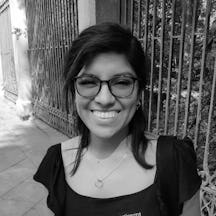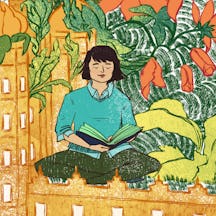Indigenous groups in Peru – and elsewhere in the world – are often those who feel the effects of climate change most keenly, but also hold the knowledge that could mitigate those effects. Nataly calls for those in the developed world to collaborate with others who have the expertise, experience and insight to stop us harming ourselves and other species.
Seeds for the future
Words by Nataly Allasi Canalesartwork by Cat O’Neilaverage reading time 5 minutes
- Serial

It’s the year 2322 and in Madre de Dios, Peru, a girl says ataana (‘goodbye’ in Matsigenka) to her friend as she’s pulled away by her mum, who is running to make her appointment with the GP. They get into the canoe and the cool breeze invites the girl to lean to touch the golden waters. The mum looks at the horizon as she sets her eyes on a former gold-mining area that was exploited for hundreds of years.
From the elders, they have learned of the awful and inhumane practices that brought socio-ecological crises to her community and the surrounding areas. Lives cut short, ways of life disrupted, damaged land and polluted rivers were too much of a price for gold- and oil-extractive activities.
But that’s all in the past: now it is a newly created reforestation park that is starting to heal; the elders’ fight, the support of the citizens, and the decision-makers’ policies proved to be effective. A little research camp is set there to study how species and population networks are recovering.
The pair get off the canoe and enter the medical post, where they find the intercultural translator, who joins the family to tell the GP the girl needs her second jab for dengue.
And I don’t wish to wait 300 years for this to happen. I wish we would take action now to acknowledge, respect and appreciate other cultures that are not ours. Especially the local and Indigenous groups that have a key role as guardians of biodiversity, but are often overlooked and mostly not taken into account while making decisions, despite being some of the first to experience the effects of climate change.
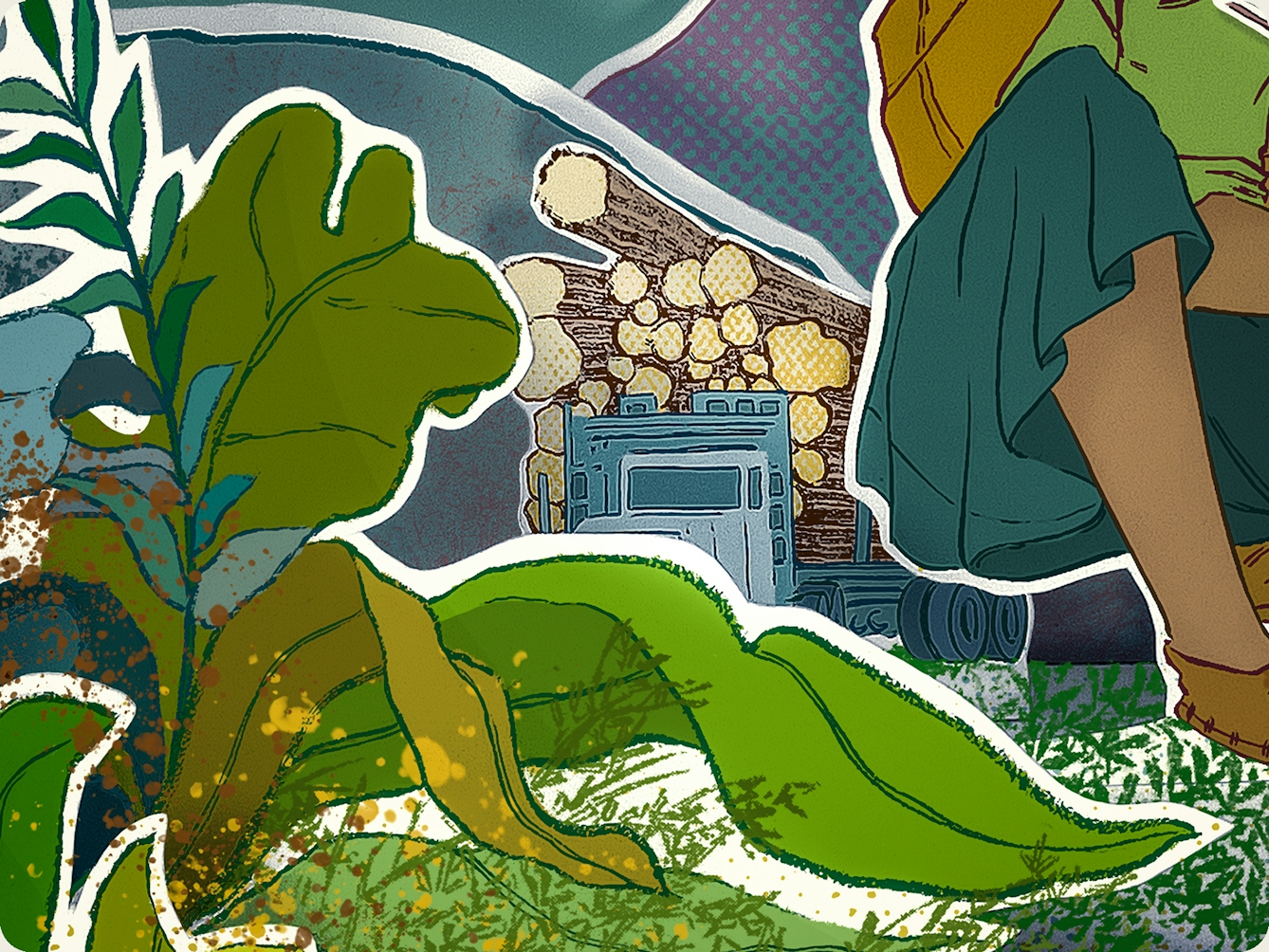
“From the elders, they have learned of the awful and inhumane practices that brought socio-ecological crises to her community and the surrounding areas.”
The keepers of plant diversity
César Lucero Huamán, native to Cañaris, Northern Peru, is driven by his love of the fever tree to preserve it. I knew he was a romantic citizen scientist when he said: “Some wear the cockade on their chest during the independence month; I collect and keep quina seeds instead.”
His interest in this particular tree comes from the stories he heard from his grandpa and mum, especially the different ways fever tree can be used to treat and prevent a wide range of maladies. He decided to take action after he saw how the wildfires engulfed the forests of his province in 2016, which he helped to extinguish.
“Had you been here, you would’ve wept; the wildfire expanded outside our community and it was dark all the time. We could only see the fog and nothing beyond.”
Since then, he’s been using the phone his brother gave him to record every fever tree he sees. Under his own initiative and budget, he runs a nursery called Sumaqquina (Quechua for “beautiful fever tree bark”), where he grows different varieties of Cinchona to later “take them to a very special place where they would live for ever”.
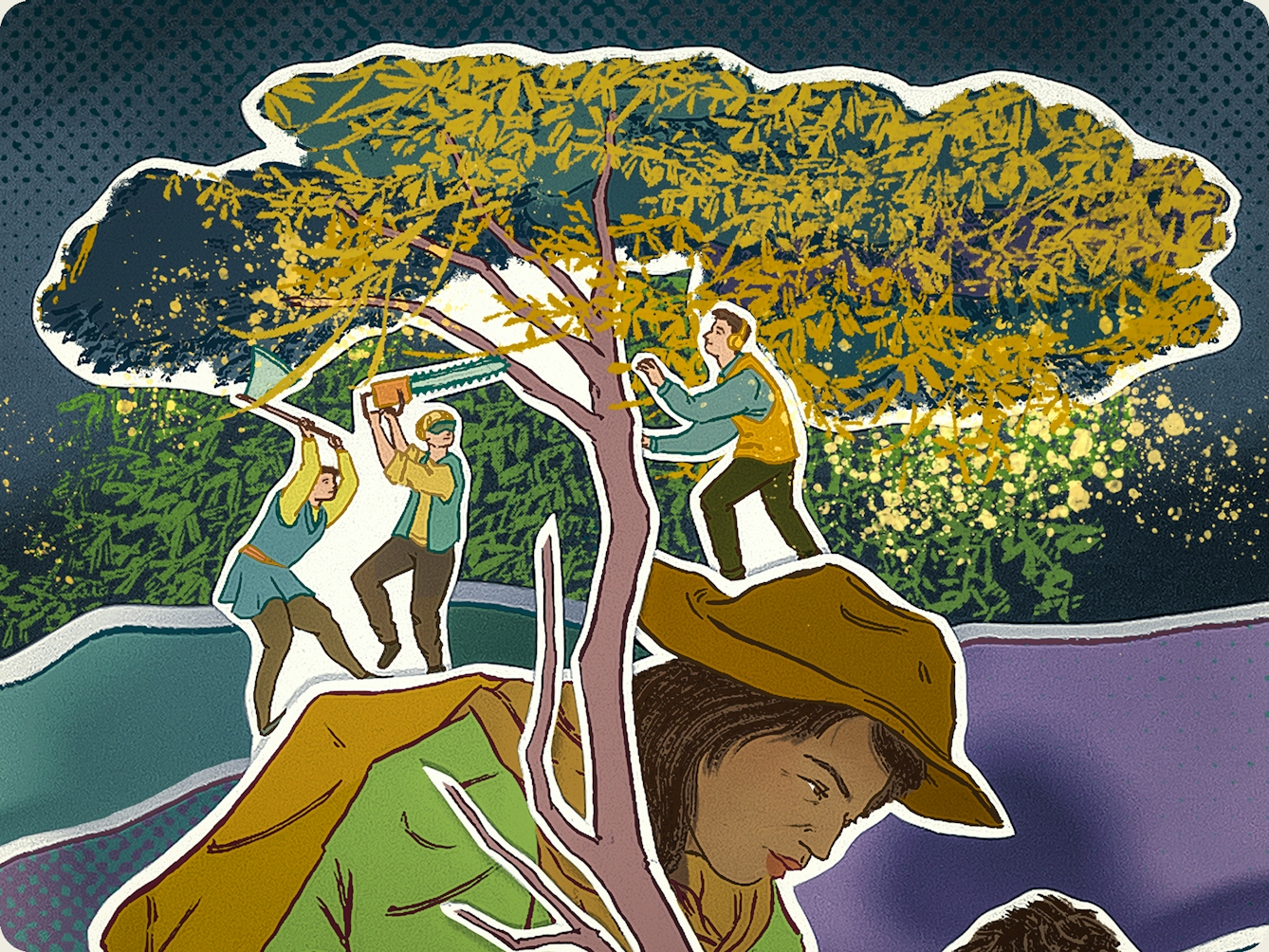
“These women face a double struggle: defending their lands and rights against extractive companies and male-dominated Indigenous leadership boards.”
Meanwhile in the Awajún-Wampis nations in Alto Marañón, the women are in charge of the farming. In fact, the Awajún-Wampis myth of Nugkui explains the origin of agriculture, which says, firstly, that different seeds will ensure the diversity of crops and end products, and secondly, that the cultivation of these seeds must be the responsibility of women.
So when an Awajún-Wampis woman marries, she receives seeds that have been carefully selected for years from her mum and grandmother, so she can start her own chacra Nugkui (integral plot) that will have useful plants for nutritional, medicinal, cultural, food and forestry use.
Actually, these women face a double struggle: defending their lands and rights against extractive companies and male-dominated Indigenous leadership boards. Although Awajún-Wampis beliefs support and give credit to women in their key role for agrobiodiversity in their lands, this knowledge often doesn’t make it to the regional political agenda.
It took me some years to gain perspective, know myself better and realise that my roots are not only the beginning, but would also become my goal.
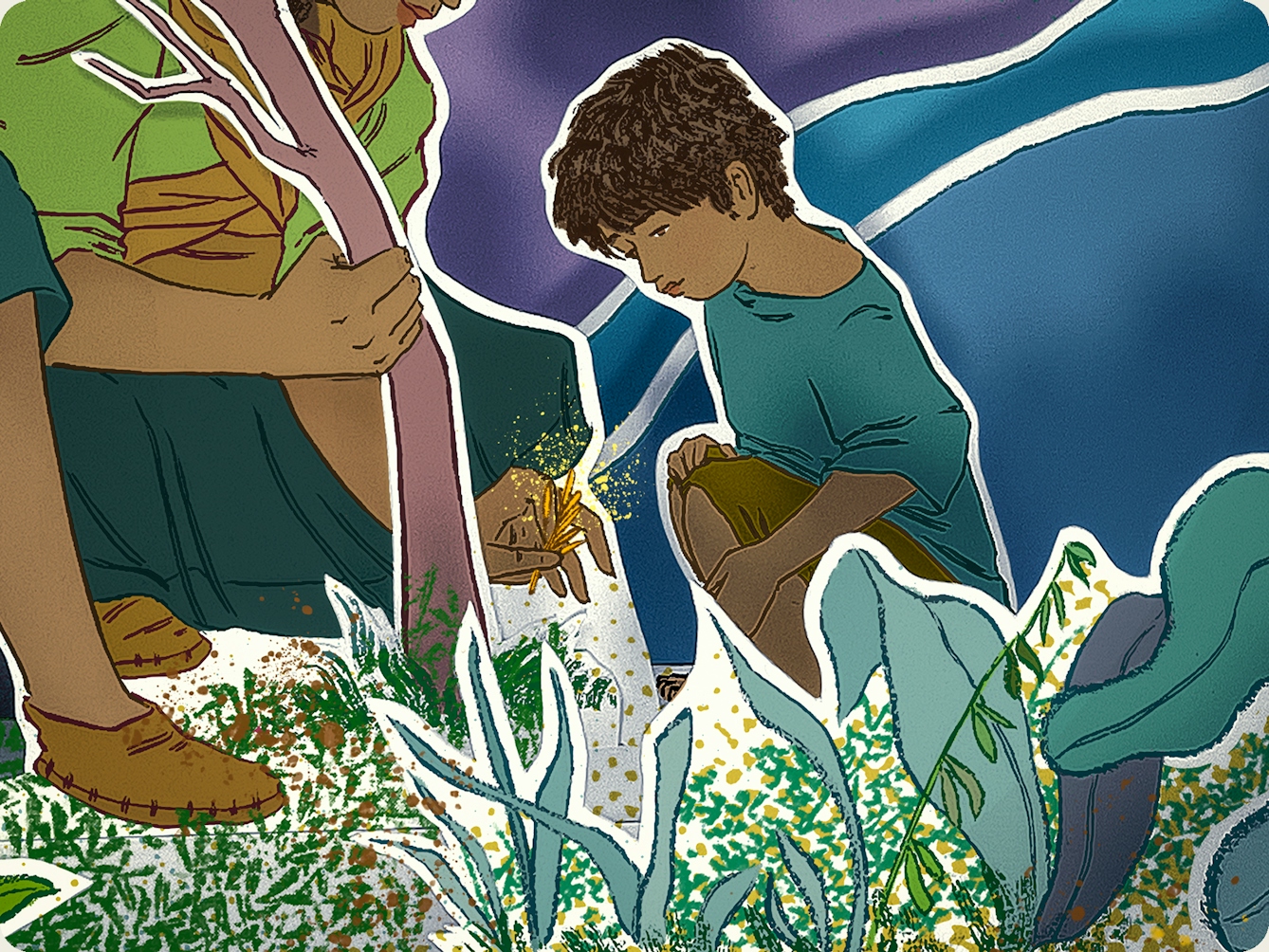
“César Lucero Huamán's interest in this particular tree comes from the stories he heard from his grandpa and mum, especially the different ways fever tree can be used to treat and prevent a wide range of maladies.”
Planting tomorrow’s world
Plants not only give us peace and a sense of harmony with nature, but also, when we know plants and are connected to them, we can use them more effectively. We’re forgetting and neglecting our healthy relationship with nature (and plants in particular), which Indigenous peoples still maintain. Thus, it’s imperative that researchers, local and Indigenous communities and policymakers join efforts to help other species thrive and protect the natural resources we need to survive.
However, the majority of plant species’ conservation status is unknown, so how can we act if we don’t have this basic knowledge? For example, analysing the DNA from historical and fresh specimens could inform us on how a species’ genetic diversity has changed. And so samples from the past serve as starting points (seeds) for the future.
When I was ten, I was only thinking of leaving Madre de Dios and wanted to get away from its issues, which of course I couldn’t fathom. It took me some years to gain perspective, know myself better and realise that my roots are not only the beginning, but would also become my goal.
Now I know that I wish not only to understand the biological processes of neotropical species, but also how they interact with anthropological processes. As citizens, we can learn to respect and appreciate other living forms that are not us and to find beauty in diversity. To appreciate other cultures and ways of life. To strip away our prejudices, which are harming other species and our self-preservation. It’s getting late, but we have the power to make the changes necessary to create a more sustainable future.
About the contributors
Nataly Allasi Canales
Dr Nataly Allasi Canales is a researcher and environmentalist at heart. Originally from the Peruvian Amazon, her aim is to unravel evolutionary histories of important organisms from her hometown, and by doing so she also aims to empower the local communities with science. She is a postdoctoral researcher at the University of Copenhagen.
Cat O’Neil
Cat O’Neil is an award-winning freelance illustrator, specialising in editorial. She studied at the Edinburgh College of Art, graduating in 2011, and has lived in Hong Kong, London, Glasgow, Lyon and Edinburgh. Her clients include the New York Times, Washington Post, WIRED, LA Times, Scientific American, the Financial Times, the Guardian/Observer, Libération and more. Her work explores the use of visual metaphors to convey concept and narrative, and combines the use of traditional and digital mediums. Much of her recent work includes the creation of 3D paper sculptures, which are made in her studio in Edinburgh.
